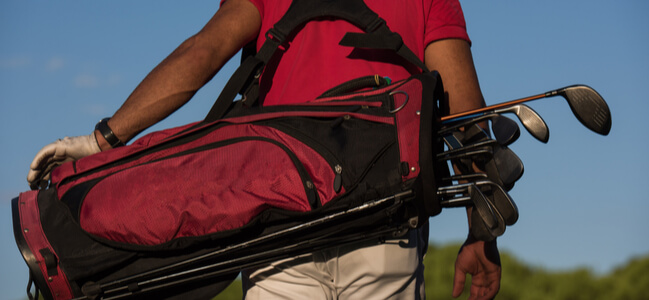How to Prevent Back Pain For a More Enjoyable Golf Game
- Category: Health
- Published: Thursday, 18 April 2024 09:40
- Joanne Wallenstein
 The following was submitted by Dr. Andrew Casden, Chief, Orthopedic and Spine Surgery at White Plains Hospital
The following was submitted by Dr. Andrew Casden, Chief, Orthopedic and Spine Surgery at White Plains Hospital
If you experience back pain related to playing golf, you’re not alone. More than 25 million Americans played golf in 2022, according to the National Golf Foundation, and a 2023 study found that more than 37% of amateur golfers experience back pain.
One of the greatest golfers of all time, Tiger Woods, struggled with back pain that was so severe he would drop to the ground in visible pain. When he finally opted for spinal fusion surgery, it revived his career. You may not play like Tiger Woods, but if your back is suffering as much as your golf game, then it’s time to investigate better options than trying to play through pain.
Nearly two-thirds of serious golfers play with some form of back discomfort, the result of spending four or more hours bent over and repeating the same motion hundreds of times. “Golf is considered a low-impact sport, yet players can suffer injuries, most notably in their lower back,” notes Dr. Andrew Casden, Chief of Orthopedics and Spine Surgery at White Plains Hospital. “Changing your swing may not help, in fact, it may worsen matters. Continuing to play with lingering back pain can lead to other more serious injuries.”
Common causes of lower back pain include muscle strains, arthritis, bone fractures, and herniated discs, which if left untreated can lead to severe issues, including nerve damage. “Herniated discs can occur in the lower back when making the bending, or twisting movements associated with a golf swing,” says Dr. Casden. “Symptoms of a herniated disk vary, but they can include back pain, numbness or tingling, and weakness. They can sometimes cause radiating pain to the buttocks, legs, and feet.”
Tips to Stay on Course
One of the most overlooked causes of back pain is the way players lift and carry their clubs. By yanking their golf bags over their shoulder, players can injure themselves before they set foot on the course. To avoid injury, keep your back straight, use the strength of your legs, and engage your core and glutes to lift and carry the golf bag using both straps to help divide the weight of the bag evenly across your back.
Other back-saving tips that can keep you in the game include:
• Warming up before playing. This increases the blood flow to your muscles and makes your muscles less susceptible to tears It also improves your flexibility and increases your range of motion when you swing. “Cooling down after a game before jumping into your next activity is equally important as the warm up,” says Dr. Casden. “It allows you to clear out the lactic acid that’s built up in your system while you’ve been playing. Lactic acid build-up can result in muscular pain and fatigue.”
• Exercising. Add exercises that stretch and strengthen your back, such as yoga.
• Treatment and rest. To help relieve pain and swelling, Dr. Casden recommends applying ice, followed by heat a few hours later and rest. If cleared for use by your doctor, anti-inflammatory medications like Advil or Aleve may help. Whether you swing a club like Tiger Woods or hit the ball in the woods, golfing is a great way to get outdoors and exercise. Remember, a little knowledge and preparation can help keep you in the game.
Whether you swing a club like Tiger Woods or hit the ball in the woods, golfing is a great way to get outdoors and exercise. Remember, a little knowledge and preparation can help keep you in the game.
Dr. Andrew Casden is Chief of Orthopedic Surgery and Spine Surgery at White Plains Hospital. To make an appointment, please call 914-849-7897.
Health Matters
The original version of this article was published in Health Matters, a White Plains Hospital publication.











